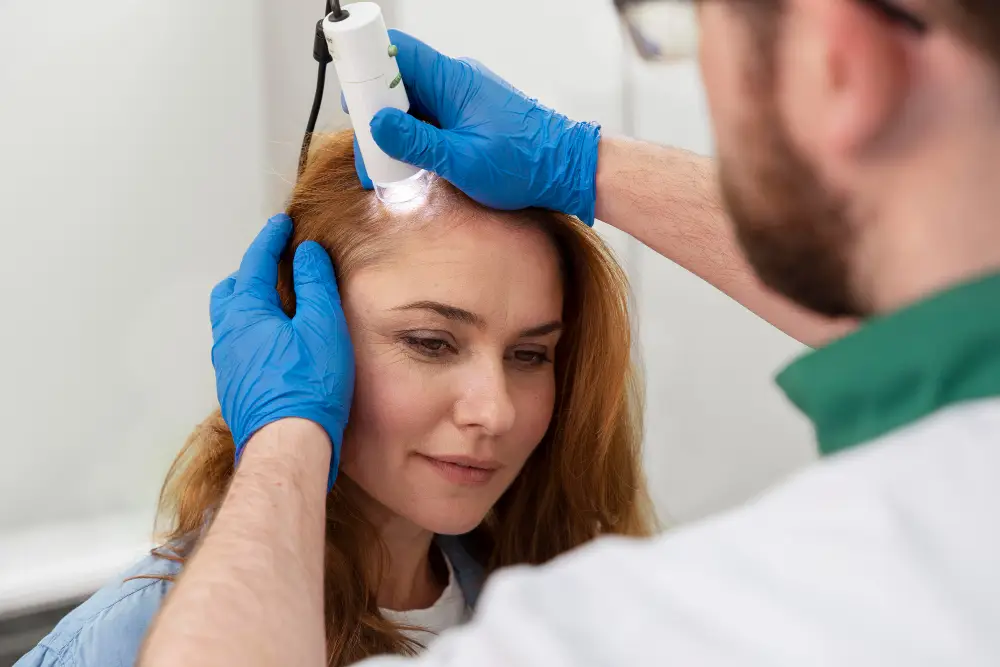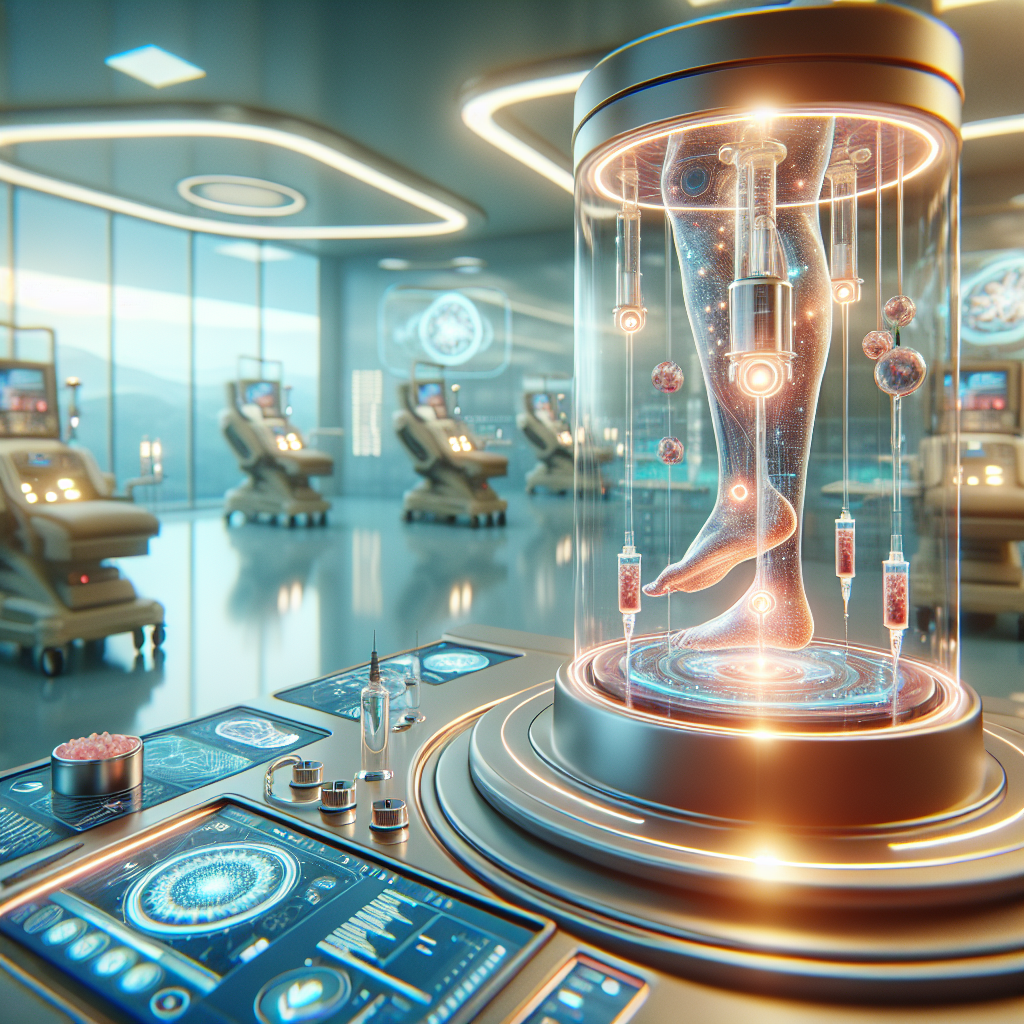
A Comprehensive Guide to Quadriplegic Stem Cell Treatment: Understanding Pathways to Functional Recovery
Key Takeaways
- Quadriplegia, often resulting from spinal cord injury, presents profound challenges, but ongoing research into neuroregeneration offers evolving pathways for potential functional recovery.
- Advanced regenerative approaches aim to support the body’s natural healing processes and enhance motor function restoration, building upon traditional rehabilitation methods.
- Navigating the options for quadriplegic stem cell treatment requires a thorough understanding of scientific advancements, ethical considerations, and realistic expectations.
- Pereira, Colombia, offers a distinct advantage with its high-standard medical infrastructure, patient-centric care environment, and dedicated support for international patients seeking advanced therapies.
- Choosing a path forward involves discerning evidence-based information, overcoming logistical hurdles, and engaging with a team committed to transparency and patient empowerment.
Introduction: Charting a Path Forward for Quadriplegia
Living with quadriplegia presents unique and profound challenges, impacting every facet of an individual’s life and that of their loved ones. The journey after a spinal cord injury, leading to a loss of motor function and sensation in all four limbs, is often one of continuous adaptation, resilience, and an unwavering search for hope. In recent years, advancements in regenerative medicine, particularly in the realm of quadriplegic stem cell treatment, have opened new avenues for discussion and potential. While these pathways are still evolving, they represent a significant area of interest for those seeking improved functional recovery and neuroregeneration.
This comprehensive guide is designed to empower you with information, not to offer definitive clinical advice. Our goal is to demystify the landscape of advanced regenerative therapies, explain the scientific principles behind them, and transparently discuss the unique considerations for individuals exploring these options, particularly when considering international care. The team at Regencord in Pereira, Colombia, believes in education, patient empowerment, and providing a clear, ethical framework for understanding these complex treatments. We aim to be a trusted resource, helping you navigate the uncertainties to make informed decisions about your potential path forward.
The Stakes: Understanding Quadriplegia and the Quest for Functional Recovery
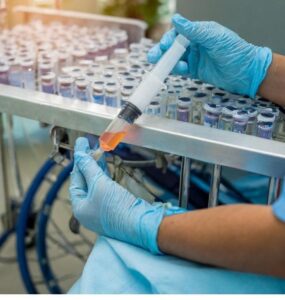
Quadriplegia, or tetraplegia, is typically caused by a severe spinal cord injury (SCI), often resulting from trauma, disease, or birth defects. It leads to partial or complete paralysis below the neck, affecting both motor function and sensory capabilities. The implications are far-reaching, encompassing daily living activities, employment, social engagement, and overall quality of life. According to the World Health Organization (WHO), spinal cord injuries affect between 250,000 and 500,000 people globally each year, with significant long-term disability.
The primary challenges faced by individuals with quadriplegia include:
- Loss of Motor Function: Impaired or absent movement in the arms, hands, trunk, and legs, affecting independence.
- Sensory Deficits: Reduced or absent sensation, increasing risks of pressure sores and unnoticed injuries.
- Autonomic Dysregulation: Issues with blood pressure, temperature control, bladder, and bowel function.
- Respiratory Complications: Especially with higher-level injuries, requiring ventilator support.
- Secondary Health Issues: Increased susceptibility to infections, chronic pain, and psychological impacts such as depression.
Traditional rehabilitation focuses on maximizing existing function, preventing complications, and adapting to new ways of living. While invaluable, these approaches often leave individuals seeking more profound changes, particularly in motor function restoration and the potential for neuroregeneration. This drive fuels the exploration of advanced therapies that aim to repair or bypass damaged neural pathways, offering a glimmer of hope for greater functional recovery.
Research highlighted by the U.S. National Institutes of Health (NIH) underscores the complexity of SCI and the urgent need for innovative solutions. The focus of contemporary research often involves understanding the cellular and molecular mechanisms of nerve damage and repair, including the role of different cell types in promoting neuroregeneration. While significant breakthroughs are continually being made, it is crucial to approach new therapies with a balanced understanding of their current stage of development and the evidence supporting their application.
Navigating the Conventional Landscape of Quadriplegia Care
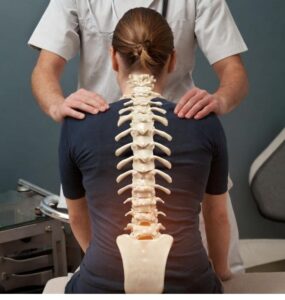
For many individuals living with quadriplegia, the conventional landscape of care predominantly centers on intensive physical and occupational therapy, medication management, and assistive technologies. These foundational elements are critical for maintaining health, preventing secondary complications, and adapting to daily life post-injury. However, patients often face a challenging reality when seeking opportunities for significant motor function restoration or neuroregeneration beyond these established methods.
The traditional journey typically involves:
- Acute Care & Stabilization: Immediate medical attention following the spinal cord injury to stabilize the patient and prevent further damage.
- Inpatient Rehabilitation: Intensive therapy focused on regaining strength, mobility, and learning adaptive techniques. This is where the initial work on functional recovery begins.
- Outpatient & Community-Based Therapy: Ongoing therapy to maintain gains and further adapt to home and community environments.
- Long-Term Management: Addressing chronic pain, spasticity, bladder/bowel dysfunction, and psychological support.
While these pathways are indispensable, patients often encounter limitations:
- Plateauing of Recovery: Many experience a plateau in functional gains after the initial recovery period, leaving them searching for options that could foster continued neuroregeneration.
- Access Barriers: Availability of advanced rehabilitation technologies or specific types of therapy can vary greatly by region and insurance coverage.
- Cost Burden: The long-term, high cost of care and specialized equipment can be financially overwhelming for many families.
- Limited Novel Options: Access to cutting-edge research or advanced regenerative therapies may be restricted to specific clinical trials or highly specialized centers, often with stringent eligibility criteria.
This often leads patients to explore alternative or complementary options, including advanced regenerative therapies like quadriplegic stem cell treatment. The search is driven by a desire to push the boundaries of what is conventionally possible, to explore every avenue for motor function restoration and enhanced functional recovery, and to understand the science behind neuroregeneration.
The Pereira, Colombia Advantage: A Holistic Environment for Neuroregeneration
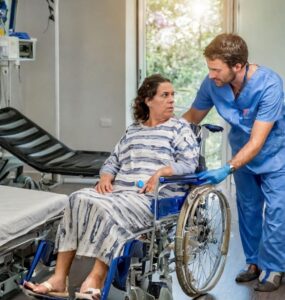
When considering advanced therapies for conditions as complex as quadriplegia, the choice of location for care extends beyond just the clinical team. It encompasses the entire patient journey – from the quality of infrastructure to the holistic support environment. Pereira, Colombia, emerges as a compelling destination, offering a unique blend of high-standard medical care and a deeply supportive setting for individuals pursuing advanced regenerative pathways.
The team at Regencord in Pereira, Colombia, operates within a framework designed to optimize the experience for international patients, focusing on ethical, transparent, and patient-centric care.
Robust Medical Infrastructure and Regulatory Oversight
- Accredited Facilities: Colombia boasts a rapidly evolving healthcare sector with many hospitals and clinics meeting international standards. Institutions in Pereira are equipped with modern technology and staffed by highly trained professionals.
- Governmental Regulation: The Colombian Ministry of Health and INVIMA (Instituto Nacional de Vigilancia de Medicamentos y Alimentos) regulate medical treatments, including advanced therapies, to help ensure patient safety and ethical practice. This oversight is crucial for developing and implementing regenerative approaches, offering a layer of assurance for patients exploring advanced options for neuroregeneration and motor function restoration.
- Skilled Medical Teams: Colombian medical education is rigorous, producing specialists who are often bilingual and experienced in international patient care. This ensures clear communication and a deep understanding of diverse patient needs.
A Patient Journey Designed for Comprehensive Care
The journey for a patient seeking advanced quadriplegic stem cell treatment requires more than just clinical intervention; it demands a seamless, supportive, and accessible experience. Regencord understands that the path to functional recovery is multifaceted.
- Dedicated Patient Advocacy: Our team provides personalized support, from initial inquiry to post-treatment follow-up. This includes assistance with travel logistics, accessible accommodation, local transportation, and interpreting services. This focus on simplifying the often-overwhelming practicalities allows patients to concentrate on their health.
- Holistic Care Environment: Pereira’s natural beauty and tranquil atmosphere contribute to a healing environment. The city offers a gentle pace of life, often conducive to recovery and rehabilitation, complementing the medical treatment focused on neuroregeneration and functional recovery.
- Extended Rehabilitation Potential: The relatively lower cost of living in Pereira, compared to many Western nations, means that longer, more intensive periods of rehabilitation are often more feasible. This extended engagement can be crucial for patients pursuing motor function restoration after advanced therapies.
The Economic and Environmental Advantage
Beyond the clinical and logistical benefits, Pereira offers distinct economic and environmental advantages:
- Cost-Effectiveness: High-quality medical care in Colombia can be significantly more affordable without compromising standards. This can make advanced treatments and comprehensive, ongoing rehabilitation for quadriplegia more accessible, allowing patients to pursue pathways that might otherwise be financially out of reach.
- Accessible Location: As part of Colombia’s coffee region, Pereira is well-connected with international airports, making travel more manageable.
The decision to seek advanced quadriplegic stem cell treatment is monumental. By offering a blend of rigorous medical standards, dedicated patient support, and a restorative environment, Regencord in Pereira aims to provide a clear and compassionate pathway towards exploring possibilities for motor function restoration and neuroregeneration.
Introducing The Regencord Pathway Navigator: Your Guide to Clarity
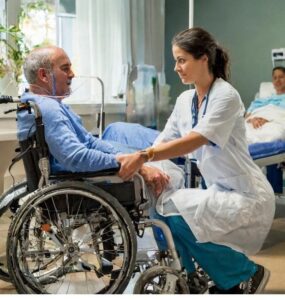
Navigating the complex world of advanced therapies for quadriplegia can feel like charting unknown waters. To empower you with structure and clarity, the team at Regencord in Pereira, Colombia, has developed **The Regencord Pathway Navigator**.
This proprietary resource is designed as a practical checklist and informational tool, guiding you through the critical considerations when exploring regenerative pathways for spinal cord injury. It aims to address common information gaps and logistical concerns, helping you organize your thoughts and questions.
What The Regencord Pathway Navigator Offers:
- Understanding Your Condition: Prompts to help you articulate your specific type of spinal cord injury, current functional status, and personal goals for motor function restoration and functional recovery.
- Scientific Inquiry Checklist: A framework for evaluating the scientific basis of different advanced therapies, including questions about research, clinical trials (referencing ClinicalTrials.gov and PubMed studies), and the current understanding of neuroregeneration.
- Ethical & Regulatory Considerations: Guidelines for understanding the ethical landscape of regenerative medicine and the regulatory environment in Colombia (e.g., INVIMA standards) compared to other regions.
- Logistical Planning Aid: A step-by-step checklist for preparing for international medical travel, including travel accessibility, accommodation, visa requirements, and communication needs.
- Questions for Your Care Team: A comprehensive list of questions to ask during a confidential case review, ensuring all your concerns regarding quadriplegic stem cell treatment are addressed.
- Realistic Expectations Framework: Tools to help you establish a realistic outlook on potential outcomes for motor function restoration and functional recovery, grounding hope in evidence-informed understanding.
The Regencord Pathway Navigator is not a diagnostic tool, nor does it make medical recommendations. Instead, it serves as your personal advocate for informed decision-making, ensuring you have a structured approach to evaluating the potential of advanced therapies and understanding the patient journey with Regencord.
Accessing this valuable resource is part of our commitment to transparent and patient-centric education. It’s designed to be your compass in exploring the possibilities for enhanced functional recovery.
Our Regenerative Philosophy: Fostering Motor Function Restoration Ethically
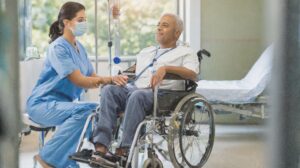
At Regencord in Pereira, Colombia, our approach to advanced therapies for spinal cord injury and quadriplegia is anchored in a philosophy that prioritizes ethical conduct, rigorous scientific grounding, and profound patient advocacy. We understand the deeply personal and often emotionally charged nature of seeking solutions for functional recovery and neuroregeneration.
Pillars of Our Philosophy:
- Education First: Our primary role is to educate. We believe that empowering individuals with accurate, comprehensive, and understandable information about quadriplegic stem cell treatment is paramount. This includes a transparent discussion of the current state of research, potential pathways, and realistic expectations, always drawing from authoritative sources like the NIH and PubMed-indexed studies.
- Ethical Framework: All pathways discussed and facilitated adhere strictly to ethical guidelines and Colombian regulatory standards, as overseen by INVIMA. We differentiate between established clinical research and commercially available therapies, ensuring clarity on the scientific evidence and current understanding of neuroregeneration. We do not promote unverified claims or make promises of “cures.”
- Patient Empowerment: We strive to put the patient at the center of every decision. Our team serves as a guide, providing the tools and support necessary for individuals to make choices that align with their personal values and health goals. This includes addressing concerns about motor function restoration and functional recovery with sensitivity and realism.
- Holistic Support: Recognizing that a spinal cord injury impacts the whole person, our philosophy extends beyond clinical considerations. We provide comprehensive logistical, emotional, and cultural support, ensuring that the entire experience in Pereira is as comfortable and conducive to healing as possible.
- Continuous Learning and Adaptation: The field of regenerative medicine is dynamic. We are committed to staying informed about global advancements in neuroregeneration and stem cell research, integrating new, evidence-informed understandings into our educational framework to best serve our patients.
Our commitment is to guide you through a pathway that respects your autonomy, prioritizes your well-being, and provides a clear, principled approach to exploring advanced options for quadriplegia. We aim to foster an environment where hope is tempered with realism, and decisions are founded on sound information and compassionate support, all in the pursuit of enhancing functional recovery.
Overcoming Common Hesitations: Why Seeking Clarity is a Strategic Advantage
Considering advanced therapies for quadriplegia, especially involving international travel, naturally brings forth a spectrum of hesitations and concerns. These are valid and understandable. At Regencord, we believe addressing these concerns directly and empathetically is crucial for building trust and empowering informed decisions. Seeking clarity is not just about gathering facts; it’s a strategic step toward understanding all available pathways for motor function restoration and neuroregeneration.
“Is pursuing stem cell treatment for quadriplegia ethically sound and medically legitimate, especially abroad?”
This is a fundamental and responsible question. The landscape of advanced therapies is complex, with varying regulations globally. In Colombia, medical treatments, including advanced therapies, are subject to the oversight of the Ministry of Health and INVIMA. Our commitment is to transparency, educating you on the regulatory environment and ensuring that any pathways we discuss align with ethical guidelines and a scientific basis. We emphasize the importance of evidence-informed approaches, drawing from research highlighted by the NIH and PubMed-indexed journals on spinal cord injury and neuroregeneration, rather than engaging in unverified claims. Seeking a confidential case review allows us to present these facts, helping you discern legitimate, research-aligned approaches from those lacking scientific rigor.
“The thought of traveling internationally for medical treatment, especially with a spinal cord injury, feels overwhelmingly complex and unmanageable.”
The logistical challenges of international travel with quadriplegia are significant, and it’s natural to feel daunted. However, our patient advocacy team is specifically designed to transform this perceived nightmare into a meticulously managed journey. We provide comprehensive assistance with every step: from accessible travel arrangements and accommodation in Pereira, to local transportation and interpretation services. Our goal is for you to focus solely on your health and potential functional recovery, knowing that all practicalities are handled with precision and compassion. We guide you through the process, removing the burden of logistical planning from your shoulders.
“Will the potential benefits of stem cell treatment for my quadriplegia outweigh the significant financial and personal investment?”
The investment in advanced therapies is indeed substantial, both financially and emotionally. Without making specific efficacy claims, we encourage you to consider the value of exploring all possible avenues for potential functional recovery and an improved quality of life. The cost-effectiveness of high-standard care and comprehensive, extended rehabilitation opportunities in Pereira can make these advanced pathways more accessible than in many other regions. This allows for a deeper, more sustained engagement with the healing process—a strategic investment in long-term well-being and the pursuit of every possibility for motor function restoration that might otherwise be out of reach. A confidential case review can help you understand the full scope of this investment and its potential value.
“I’ve heard mixed things about stem cell treatments; how do I know this isn’t just another unproven ‘miracle cure’?”
Skepticism regarding stem cell treatments is healthy and warranted, given the prevalence of unsubstantiated claims in some areas. Our team at Regencord fundamentally believes in discerning evidence-based approaches from unverified ones. We stand firm on a philosophy of ethical transparency, aligning with global scientific standards as evidenced by the NIH, PubMed, and ClinicalTrials.gov regarding the state of neuroregeneration research for spinal cord injury. We are not here to promise “miracle cures.” Instead, we aim to be your educators, providing realistic information about the current scientific understanding, the nuances of clinical investigation, and the specific pathways available. This approach builds trust by focusing on verifiable information and ethical considerations, helping you navigate complex information with confidence.
Overcoming these hesitations begins with open dialogue and access to accurate information. We invite you to engage with us to gain the clarity needed to make the most informed decision for your unique situation.
Glossary of Key Terms
- Quadriplegia (Tetraplegia): Paralysis affecting all four limbs and the torso, typically caused by spinal cord injury.
- Spinal Cord Injury (SCI): Damage to the spinal cord that results in a loss of function, such as mobility or sensation.
- Stem Cells: Undifferentiated cells capable of self-renewal and differentiating into various specialized cell types.
- Neuroregeneration: The regrowth or repair of nervous tissues, cells, or cell products. A key goal in treating spinal cord injury.
- Motor Function Restoration: The process of regaining lost movement or control of muscles after injury or disease.
- Functional Recovery: The restoration of a skill or capability that was lost due to injury or illness, enabling greater independence in daily activities.
- INVIMA (Instituto Nacional de Vigilancia de Medicamentos y Alimentos): Colombia’s national regulatory agency responsible for the oversight of medicines, medical devices, and health services.
- Patient Advocacy: Services dedicated to supporting patients through their healthcare journey, including logistical, informational, and emotional assistance.
Frequently Asked Questions (FAQ)
What is quadriplegic stem cell treatment, and how does it work?
Quadriplegic stem cell treatment refers to experimental or investigational therapies that involve using various types of stem cells (e.g., mesenchymal stem cells, neural stem cells) to potentially promote neuroregeneration and functional recovery after spinal cord injury. The underlying mechanisms are complex and involve potential anti-inflammatory effects, secretion of growth factors, support for existing neurons, and in some cases, differentiation into new neural cells. It’s important to understand that research is ongoing, and the efficacy and safety profiles are continuously being studied, as highlighted by ClinicalTrials.gov.
What are the realistic outcomes for motor function restoration after such treatments?
Realistic outcomes are highly individual and depend on many factors, including the severity and type of spinal cord injury, the specific therapy received, and the patient’s overall health and rehabilitation efforts. While some studies in PubMed-indexed journals show promising signs of neuroregeneration and modest improvements in motor function restoration or sensation, it is critical to approach these treatments with balanced expectations. Significant functional recovery is a complex process, and our team focuses on providing evidence-informed information to help set realistic goals.
Is treatment in Pereira, Colombia, safe and regulated?
Yes, medical care in Colombia, including advanced therapies, is subject to national health regulations enforced by the Colombian Ministry of Health and INVIMA. Reputable clinics and hospitals adhere to these standards, ensuring a level of safety and quality. Regencord is committed to facilitating care within this regulated framework, and we prioritize transparency about these standards. Our focus is on providing access to high-standard care in a regulated environment.
What is the typical patient journey for international clients seeking quadriplegic stem cell treatment?
The journey typically begins with a confidential case review, where your medical history and specific needs are assessed. If you are deemed a potential candidate, our patient advocacy team assists with all logistical planning, including travel, accessible accommodation, and local transportation in Pereira. Upon arrival, you undergo a comprehensive clinical evaluation before any proposed procedures. Post-procedure, a dedicated rehabilitation plan is often recommended, followed by ongoing support as you return home. Our “Regencord Pathway Navigator” tool helps streamline this process.
What are the costs involved, and what does it include?
The costs for advanced regenerative therapies can vary significantly based on the specific treatment plan, duration of stay, and rehabilitation needs. During your confidential case review, we will provide a transparent breakdown of potential costs, which may include clinical evaluations, the therapy itself, accommodation, and support services. We aim to offer clarity on the financial investment, understanding that this is a major consideration for individuals seeking functional recovery.
How long would I need to stay in Pereira for treatment and recovery?
The duration of your stay in Pereira will depend entirely on your individualized treatment plan and rehabilitation requirements. Some therapies may involve shorter stays, while comprehensive neuroregeneration and motor function restoration programs might necessitate an extended period for intensive rehabilitation. This will be thoroughly discussed and planned during your case review to ensure it aligns with your goals for functional recovery.
Your Next Step: Discovering Your Potential Pathway
Navigating the options for quadriplegic stem cell treatment requires thoughtful consideration and access to precise, ethical information. If you or a loved one are exploring advanced pathways for spinal cord injury and functional recovery, the team at Regencord in Pereira, Colombia, is here to provide clarity.
Discover if you are a candidate for the regenerative medicine pathways available through the team at Regencord in Pereira, Colombia. Contact us for a confidential case review.
Let us help you understand the possibilities for neuroregeneration and motor function restoration, guiding you with transparency and compassionate support.
